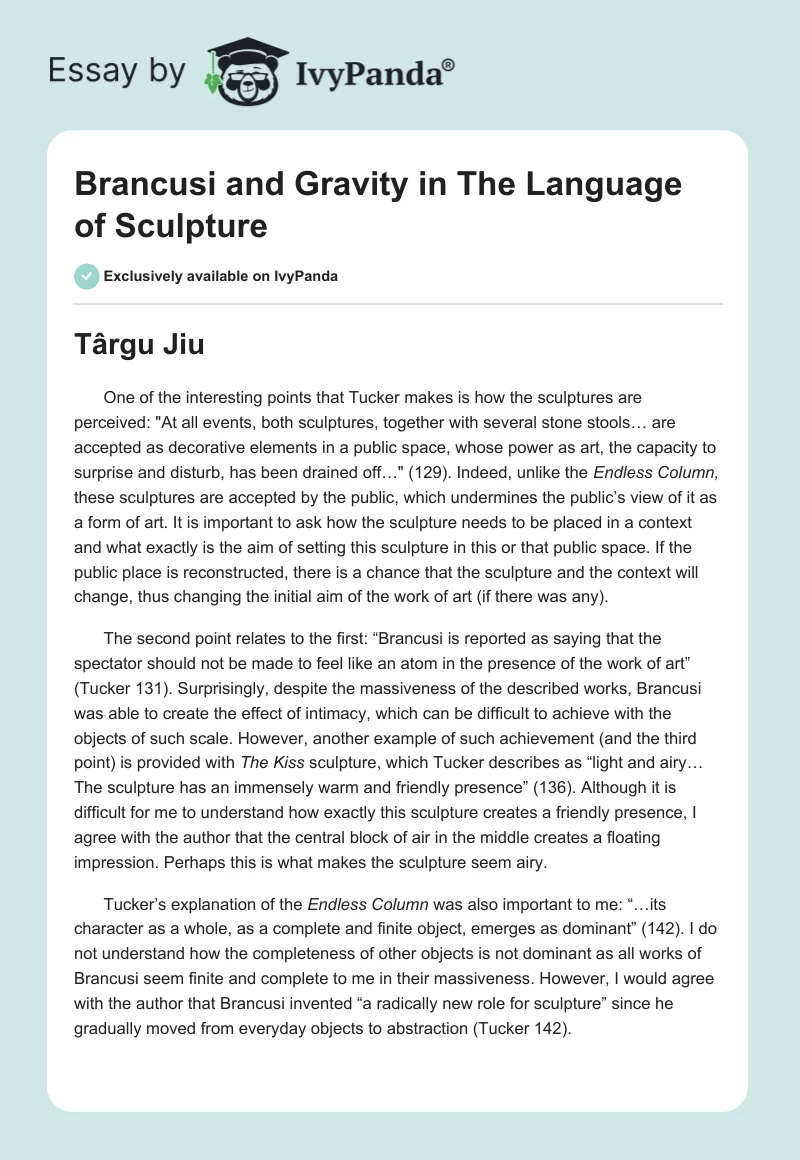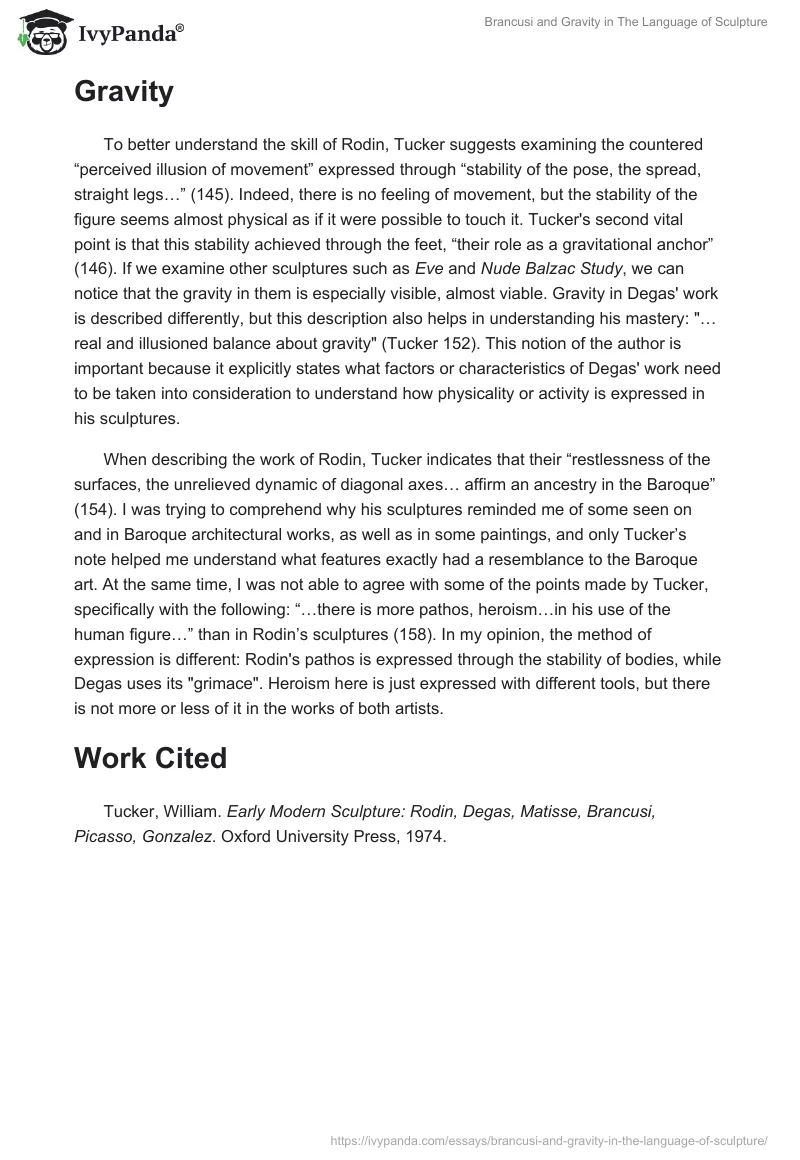Târgu Jiu
One of the interesting points that Tucker makes is how the sculptures are perceived: “At all events, both sculptures, together with several stone stools… are accepted as decorative elements in a public space, whose power as art, the capacity to surprise and disturb, has been drained off…” (129). Indeed, unlike the Endless Column, these sculptures are accepted by the public, which undermines the public’s view of it as a form of art. It is important to ask how the sculpture needs to be placed in a context and what exactly is the aim of setting this sculpture in this or that public space. If the public place is reconstructed, there is a chance that the sculpture and the context will change, thus changing the initial aim of the work of art (if there was any).
The second point relates to the first: “Brancusi is reported as saying that the spectator should not be made to feel like an atom in the presence of the work of art” (Tucker 131). Surprisingly, despite the massiveness of the described works, Brancusi was able to create the effect of intimacy, which can be difficult to achieve with the objects of such scale. However, another example of such achievement (and the third point) is provided with The Kiss sculpture, which Tucker describes as “light and airy… The sculpture has an immensely warm and friendly presence” (136). Although it is difficult for me to understand how exactly this sculpture creates a friendly presence, I agree with the author that the central block of air in the middle creates a floating impression. Perhaps this is what makes the sculpture seem airy.
Tucker’s explanation of the Endless Column was also important to me: “…its character as a whole, as a complete and finite object, emerges as dominant” (142). I do not understand how the completeness of other objects is not dominant as all works of Brancusi seem finite and complete to me in their massiveness. However, I would agree with the author that Brancusi invented “a radically new role for sculpture” since he gradually moved from everyday objects to abstraction (Tucker 142).
Gravity
To better understand the skill of Rodin, Tucker suggests examining the countered “perceived illusion of movement” expressed through “stability of the pose, the spread, straight legs…” (145). Indeed, there is no feeling of movement, but the stability of the figure seems almost physical as if it were possible to touch it. Tucker’s second vital point is that this stability achieved through the feet, “their role as a gravitational anchor” (146). If we examine other sculptures such as Eve and Nude Balzac Study, we can notice that the gravity in them is especially visible, almost viable. Gravity in Degas’ work is described differently, but this description also helps in understanding his mastery: “…real and illusioned balance about gravity” (Tucker 152). This notion of the author is important because it explicitly states what factors or characteristics of Degas’ work need to be taken into consideration to understand how physicality or activity is expressed in his sculptures.
When describing the work of Rodin, Tucker indicates that their “restlessness of the surfaces, the unrelieved dynamic of diagonal axes… affirm an ancestry in the Baroque” (154). I was trying to comprehend why his sculptures reminded me of some seen on and in Baroque architectural works, as well as in some paintings, and only Tucker’s note helped me understand what features exactly had a resemblance to the Baroque art. At the same time, I was not able to agree with some of the points made by Tucker, specifically with the following: “…there is more pathos, heroism…in his use of the human figure…” than in Rodin’s sculptures (158). In my opinion, the method of expression is different: Rodin’s pathos is expressed through the stability of bodies, while Degas uses its “grimace”. Heroism here is just expressed with different tools, but there is not more or less of it in the works of both artists.
Work Cited
Tucker, William. Early Modern Sculpture: Rodin, Degas, Matisse, Brancusi, Picasso, Gonzalez. Oxford University Press, 1974.


